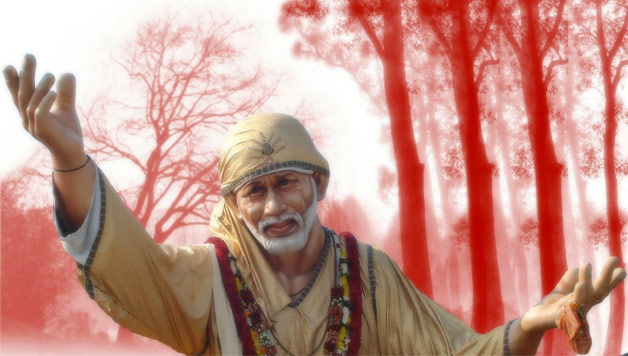
New Delhi: Sai Baba of Shirdi holds a unique place in the rich tradition of saints in India. Sai Baba, an embodiment of self-realization and perfection, did not come solely to preach but to awaken mankind through his messages of love and righteousness.
Although Sai Baba died almost 100 years ago (on October 15, 1918), still today millions of people him and have great respect for him.
Sai Baba is adored and worshipped both by Hindus and Muslims. There are many temples built all over India to honor Sai Baba.
The early life of Sai Baba is still cloaked in mystery as there isn't any reliable record of the Baba's birth and parentage.
It is believed that Baba was born somewhere between 1838 and 1842 AD in a place called Pathri in Marathwada region of Maharashtra.
Sai Baba's real name is unknown. The name ‘Sai' was given to him upon his arrival at the age of 16 in Shirdi village located in Ahmednagar district of Maharashtra.
Mahalsapati, a local temple priest, recognized him as a Muslim saint and greeted him with the words 'Ya Sai!', meaning 'Welcome Sai!'.

Sai or Sayi is a Persian title given to Sufi saints, meaning 'poor one'.
The honorific "Baba" means "father; grandfather; old man; sir". Thus Sai Baba denotes "holy father", "saintly father" or "poor old man".
In the early days of his stay at Shirdi, the young Sai used to sit motionless under a neem tree, meditating while sitting in asana. Villagers regularly flocked to see the young saint meditating, and Mahalsapati, appa Jogle and Kashinatha used to regularly visit him.
It is said that Sai Baba stayed in Shirdi for three years, disappeared for a year and returned permanently around 1858.
By this time, Sai had adopted his famous dress consisting of a knee-length one-piece robe (kafni) and a cloth cap.
He spent his time either wandering in the outskirts of village and neighboring thorny jungles or sitting under the neem tree totally self absorbed.
The first set of villagers who regarded this saintly figure were Mahalsapati, Tatya Kote, Bayyaji Bai and few others.
Bayyaji Bai felt deeply motivated by this Divine Saint, and with her motherly instinct she used to walk miles on end into the jungles in search of him, carrying food in a basket on her head.

Often she found Sai Baba sitting under some tree in deep meditation, calm and motionless. She would boldly approach him, serve the meal and return home.
Sai Baba remains a very popular saint, especially in India, and is worshiped by people around the world.
He had no love for perishable things and his sole concern was self-realization. He taught a moral code of love, forgiveness, helping others, charity, contentment, inner peace, and devotion to God and guru.
Sai Baba's teaching combined elements of Hinduism and Islam: He gave the Hindu name Dwarakamayi to the mosque he lived in, practiced Hindu and Muslim rituals, taught using words and figures that drew from both traditions, and was buried in Shirdi.
One of his well known epigrams, "Sabka Malik Ek " ("One God governs all"), is associated with Islam and Sufism. He always uttered "Allah Malik" ("God is King").
Initially, Baba dissuaded people to worship him, but gradually Baba's divine energy touched the chord of common people far and wide.
Sai Baba's millions of disciples and devotees believe that he performed many miracles such as bilocation, levitation, mindreading, materialization, exorcisms, making the river Yamuna, entering a state of Samādhi at will, lighting lamps with water, removing his limbs or intestines and sticking them back to his body (khandana yoga), curing the incurably sick, appearing beaten when another was beaten, after death rising on third day like Jesus Christ, preventing a mosque from falling down on people, and helping his devotees in a miraculous way.
He also gave Darshan (vision) to people in the form of Rama, Krishna, Vithoba and many other gods depending on the faith of devotees.
According to his followers he appeared to them in dreams even after he left his body and gave them advice.
The congregational worship of Sai Baba began in 1909, and by 1910 the number of devotees grew manifold.
The ‘shej arati' (night worship) of Sai Baba began in February, 1910 and the following year the construction of Dikshitwada temple was completed.
Sai Baba attained ‘mahasamadhi' on October 15, 1918. Before his death, he said, "Do not think I am dead and gone. You will hear me from my Samadhi and I shall guide you."






















